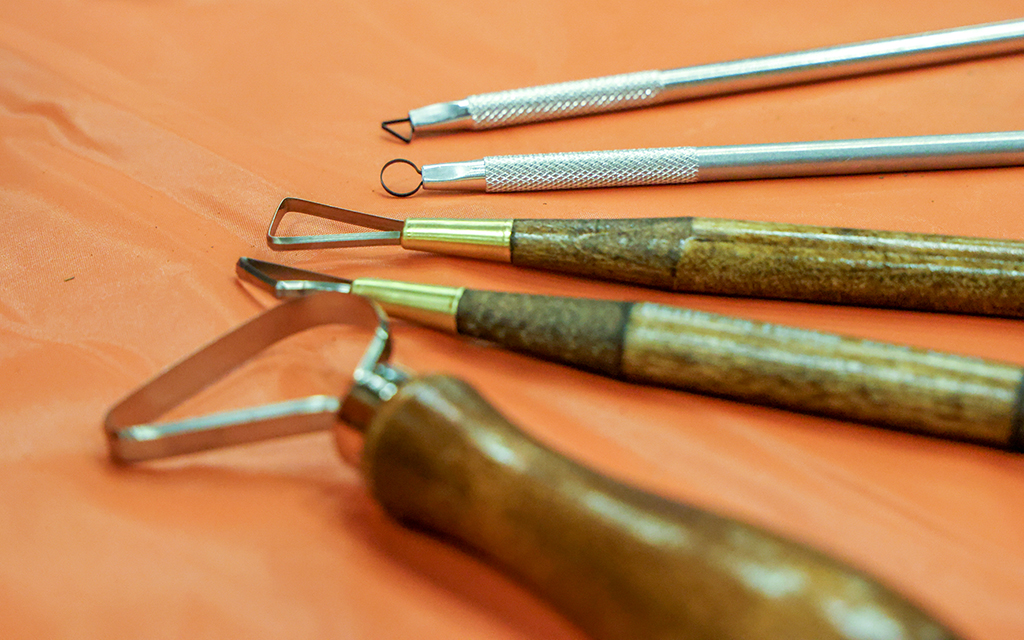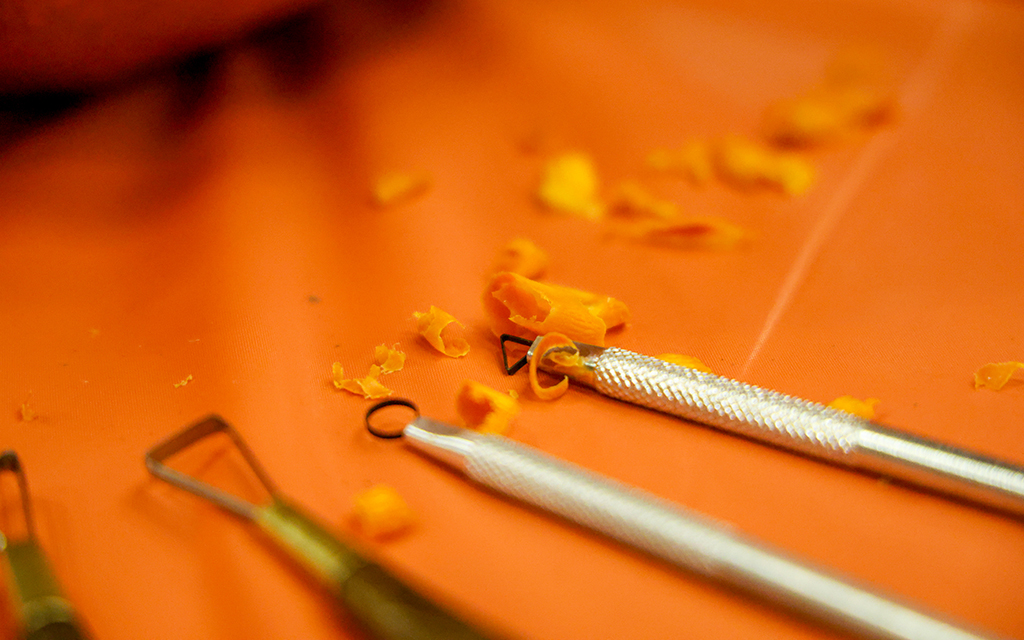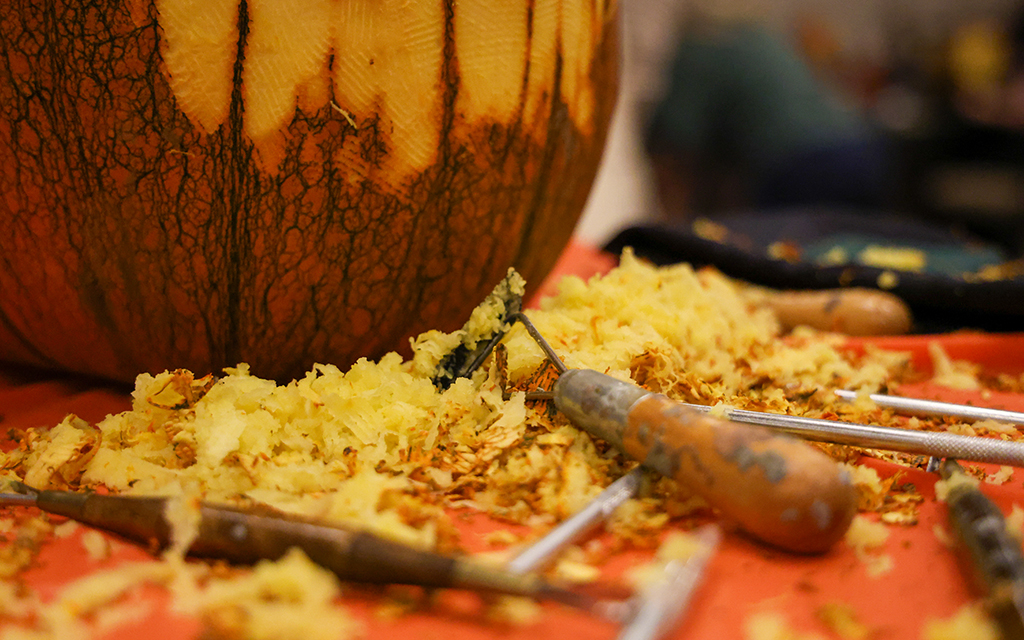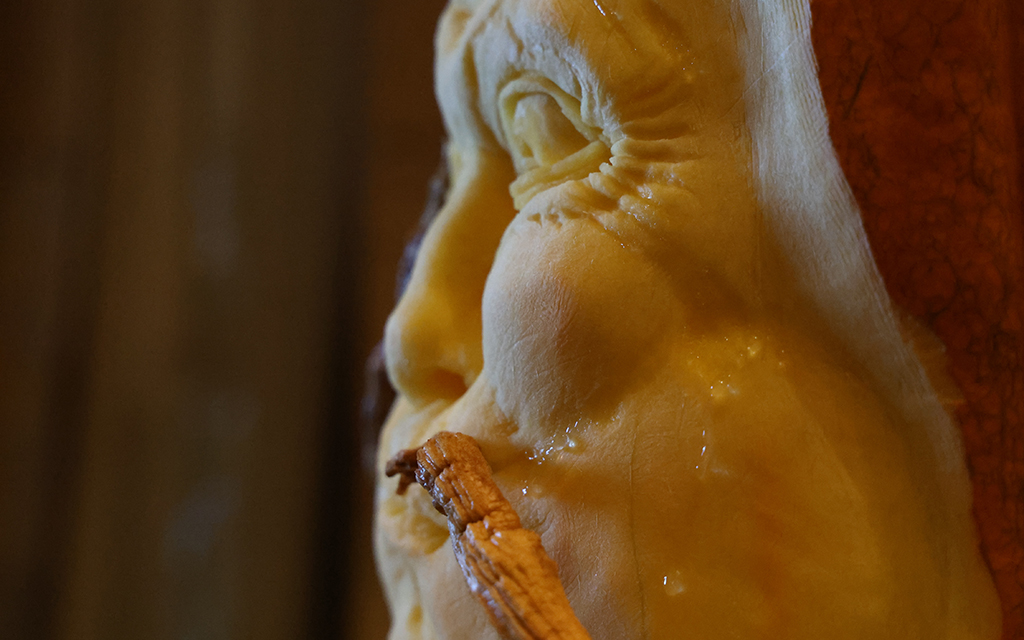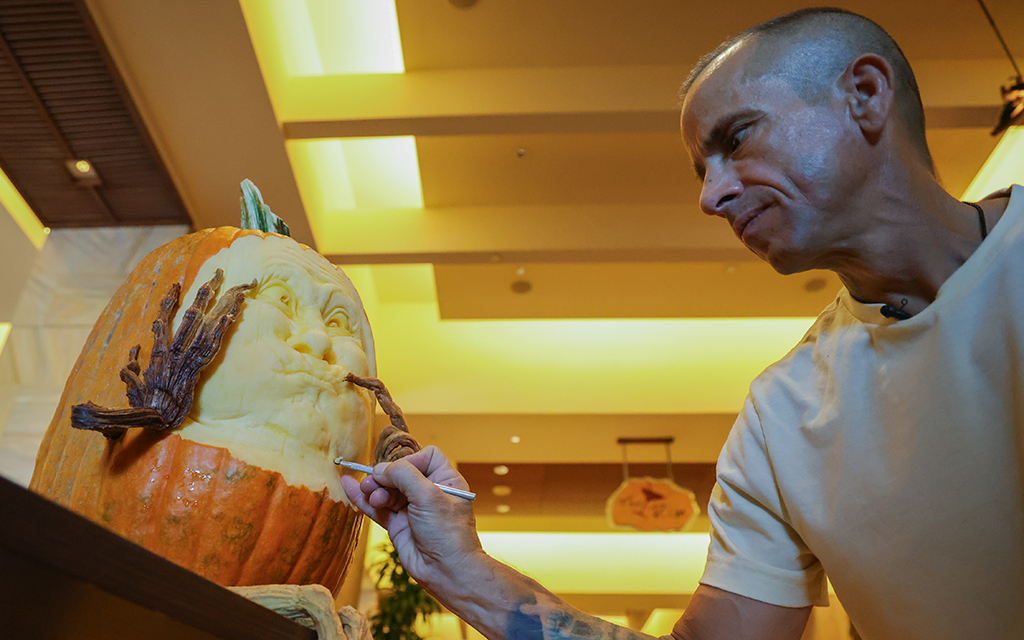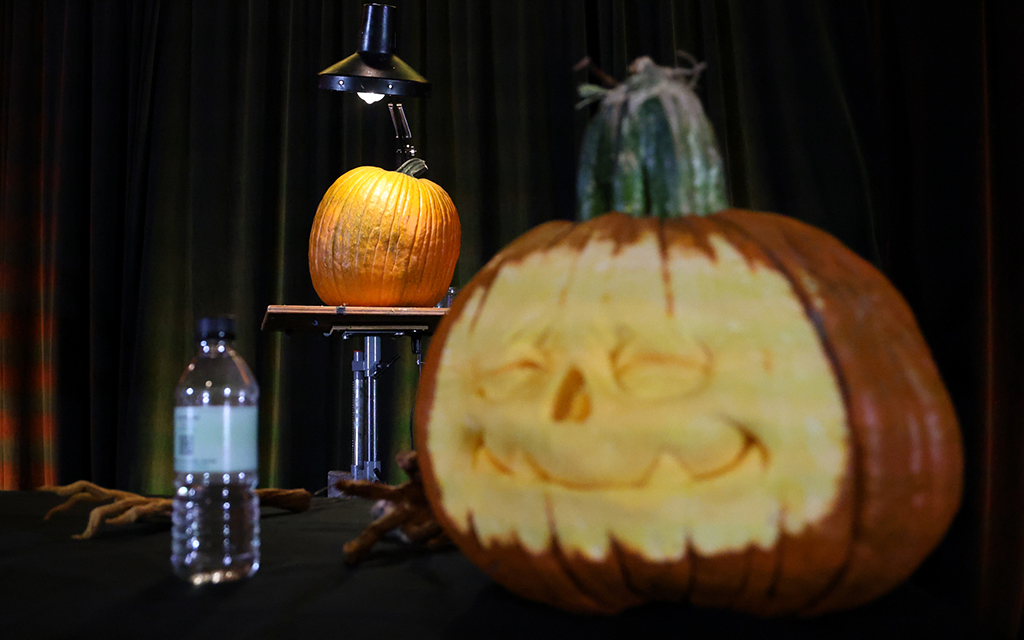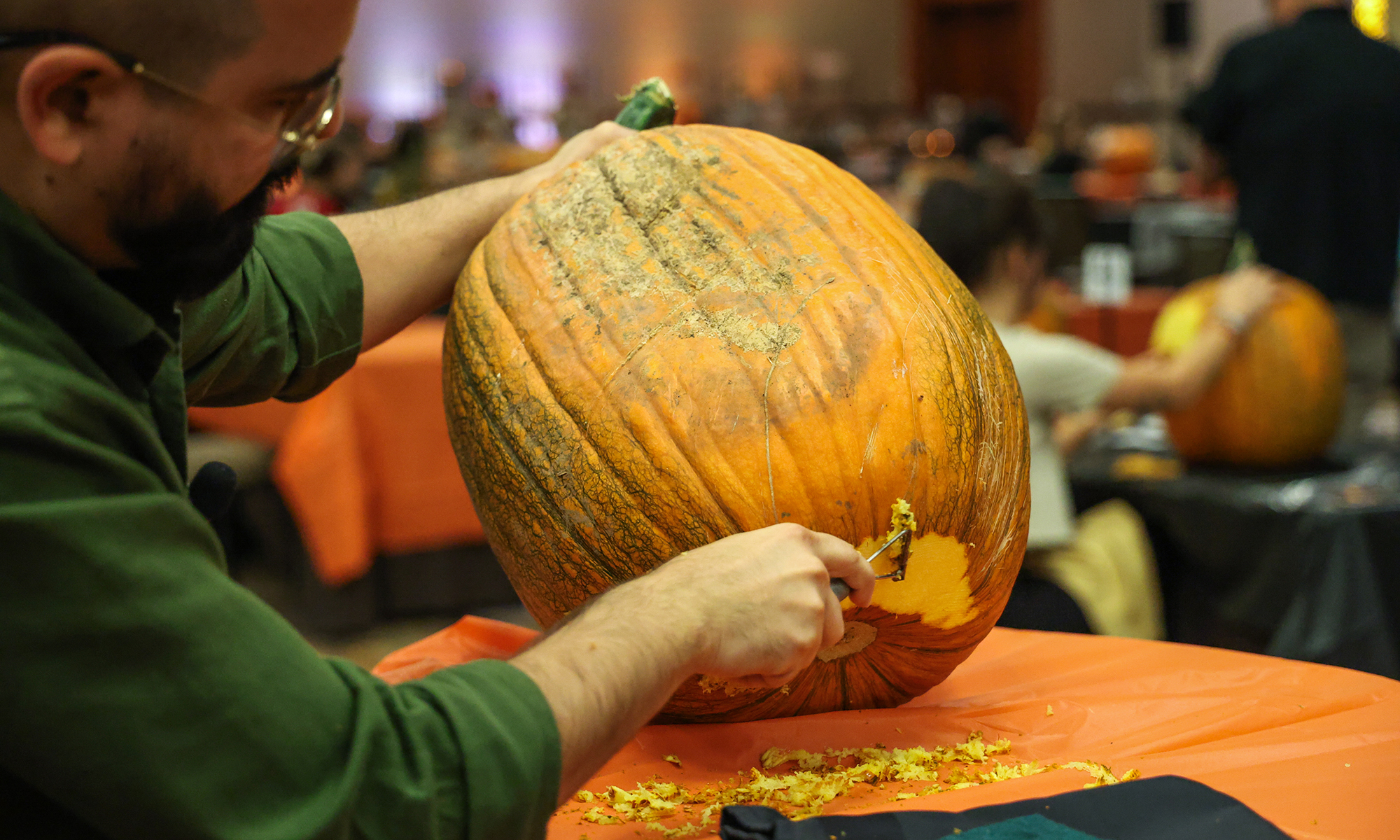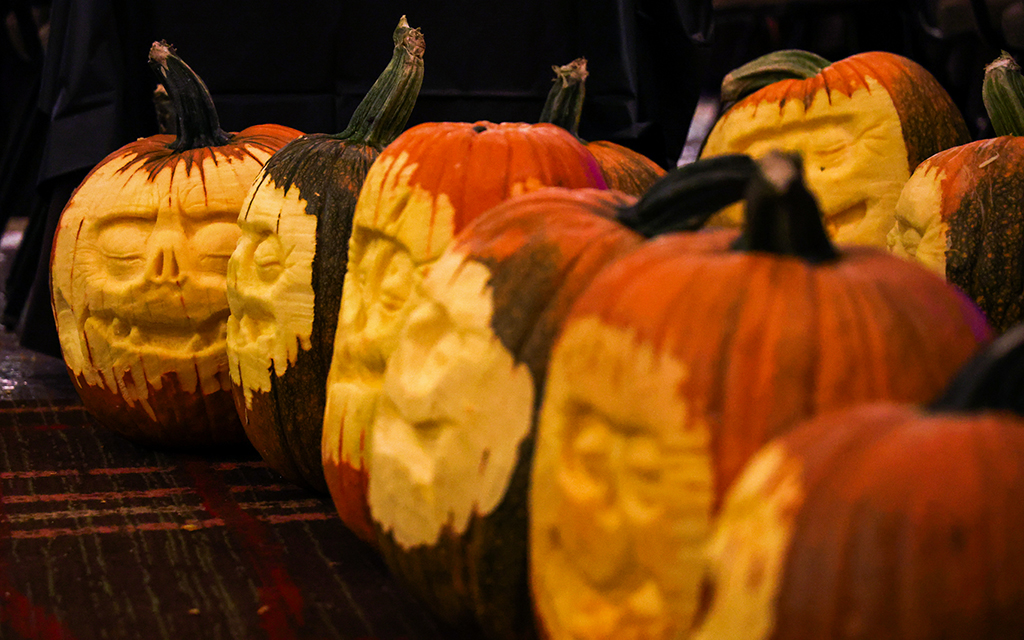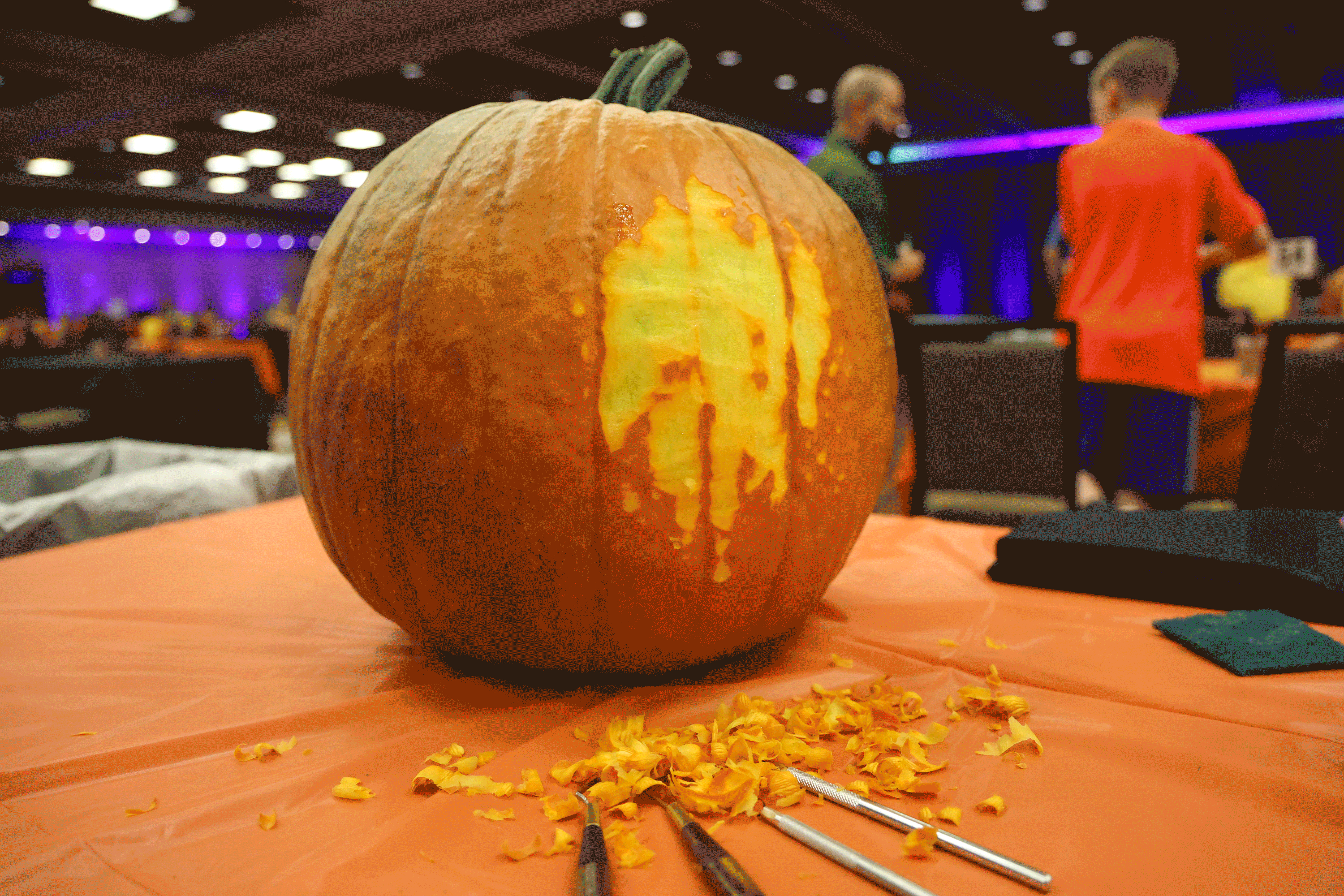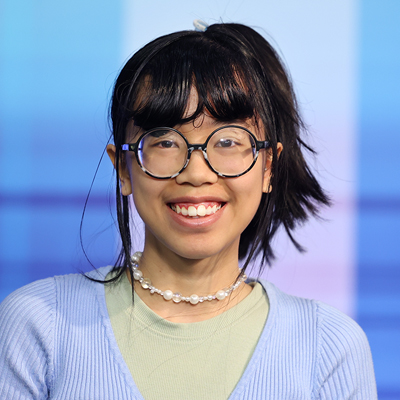5. Getting started
Always make sure that the pumpkin is oriented to work with the design in mind and that it will sit upright on its own when finished. Villafane always starts by choosing the orientation of his pumpkin and shaving the bottom down until it sits relatively flat and stable. Once the pumpkin is upright, use the largest loop or ribbon tool available to shave off the area of the pumpkin that will be used for the design. Try to remove the dark, tough exterior of the pumpkin. This will make it easier to get a feel for the space and expose the softer flesh to work with.

An attendee of a pumpkin-carving class at The Westin Kierland Resort & Spa uses a large loop tool to remove the outer layer of pumpkin for a design. Photo taken in Scottsdale on Oct. 8, 2023. (Photo by Emily Mai/Cronkite News)
In Villafane’s art, he does not often go all the way through a pumpkin, but you can work any breakage into your design and make the most of it. Start by carving out the large shapes and curves with your larger loop tools. Blocking out general features will help establish depth and finer details later on. If you are carving a face, the deepest part of your carving should be around the tear ducts of the eye. On the other hand, the tip of the nose is usually what sticks out the farthest, so avoid removing too much from there. Using these guidelines, you’ll be able to easily establish how much material you have to work with. Still, pumpkin carving is a subtractive art, so do not be afraid to break through the pumpkin.
“The secret is the more you break through, the more aware of the material you are. No one’s broken through more pumpkins than me, and that’s why I’m good at it. Failing is the key as long as you’re willing to continue trying after you fail,” Villafane said.
To test the thickness of the area you are carving, you can try pushing down with your finger on it. If the pumpkin flexes at all, then the area is getting thin, so be careful. If the pumpkin doesn’t budge, then there’s room to carve away more material.


